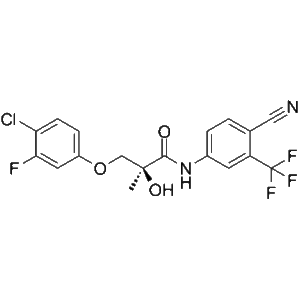
When we talk about molecules that push the boundaries of human potential, few substances stand out quite as starkly as S-23. Now, you might think I’m describing some top-secret compound from a clandestine laboratory hidden deep beneath Himalayan glaciers. But in reality, S-23 is a selective androgen receptor modulator (SARM) born right here on Earth, in the glow of modern chemistry labs. In the spirit of exploration and wonder, much like observing a distant galaxy through a telescope, peering into S-23’s origins and chemistry offers us a strange yet enlightening narrative.
The Chemical Undercurrents: Anatomy of S-23
At its core, S-23 is a synthetic molecule designed to interact with the androgen receptors in our bodies. Think of these receptors as tiny, molecular-level docking stations on muscle and bone cells waiting patiently for hormonal messengers. Testosterone arrives and says, “Hello there, may I strengthen your musculature and fortify your skeleton?” S-23, on the other hand, tries to mimic that greeting, but in a more selective fashion. Essentially, it’s a chemical impersonator, wearing a convincingly similar “costume” to testosterone and hoping to elicit many of its anabolic effects—like muscle growth—while ideally leaving behind some of the more troublesome side effects.
Chemically speaking, S-23 is part of a lineage of nonsteroidal SARMs UK, structurally distinct from classic steroids like testosterone or nandrolone. These synthetic modulators have piqued scientists’ curiosity because they hold the promise of stronger, leaner muscles without the usual baggage of severe androgenic side effects. It’s as if nature handed us a blueprint and scientists decided to tweak it, to engineer a molecular chameleon that only activates certain locks while ignoring others entirely.
The Experimental Genesis and Early History
S-23’s earliest appearances trace back to the relentless curiosity of biochemists who, decades ago, began searching for substances that would bring targeted anabolic benefits without destabilizing the hormonal balance in the human body. In the early 2000s, researchers at GTx, Inc. and various academic labs started experimenting with a swath of novel compounds to find that holy grail: a substance that could help treat muscle wasting diseases, osteoporosis, and low testosterone levels in men—basically a kinder, gentler approach to managing hormone deficiencies.
During animal studies, S-23 caught attention due to its potency. Unlike older SARMs, S-23 demonstrated strong anabolic activity and appeared to suppress sperm production in male rodents—a finding that sparked a flurry of whispers in scientific communities. Could this be the secret ingredient in a future male contraceptive pill? Perhaps. While the idea of a “male birth control pill” still lives mostly in the realm of speculation, S-23’s profile provides a fascinating test case (see research data).
But don’t expect to find official FDA-approved S-23 treatments at your local pharmacy. To date, S-23’s role remains strictly in the research domain, not yet stepping fully into the limelight of widespread medical adoption. Instead, it sits in that peculiar gray area—a compound whispered about in fitness forums and quietly studied in clinical labs. It’s like a celebrity rumored to be working on a secret album, but never quite releasing a hit single.
Cultural Nuances and Its Place in Our “Hormone-Conscious” World
In many cultures today, there is a deep fascination with performance enhancement. From Olympic athletes to everyday gym enthusiasts, we find an almost gravitational pull toward anything that can give us a slight edge. S-23, although lesser known than mainstream SARMs like Ostarine or LGD-4033, has begun to carve a small niche in that underground culture. Some “biohackers” trade vague anecdotes of its incredible muscle-building powers, while others warn that it’s too potent, even dangerous, without proper understanding and control.
In some circles, it’s whispered about with reverence; in others, with hesitation. Imagine a group of friends discussing an alien artifact: One person swears it could lead to telepathic powers, while the others worry it might cause you to glow in the dark. S-23 is a compound steeped in scientific potential yet layered with cultural mystique—both revered and approached with caution.
The Emotional Resonance of S-23’s Promise
We humans are emotional creatures, and the promise of a better body—stronger bones, leaner muscles—speaks directly to our insecurities and aspirations. The mere idea that a small molecule, carefully engineered, could let us shape ourselves as easily as molding clay may feel like magic.
But magic often comes with caveats. With S-23, there remains the concern over potential side effects, long-term health risks, and ethical considerations. Is it wise to chemically tweak our biology so profoundly, just for the sake of vanity or minor performance boosts? If you’re looking for a punchline: Well, if S-23 were a dinner guest, it’d be the one who compliments the chef (enhanced muscle growth) but also knocks over the best vase in the hallway (possible hormonal suppression). It’s an awkward trade-off, to say the least.
Real-World Context: The Modern Chemical Landscape
In the modern era, it’s not only athletes or gym rats intrigued by S-23. Some researchers wonder: Could a refined version of it help treat diseases that devastate muscle mass, such as cancer cachexia or sarcopenia in the elderly? Could selective androgen receptor modulators one day offer patients a gentler solution where traditional hormone therapies falter?
We have already seen preliminary studies suggesting SARMs might provide bone density improvements in older individuals or muscle maintenance in those recovering from surgery. These are no small feats. The ripple effects would be profound if S-23 or a future derivative could improve quality of life, reduce healthcare costs, and maybe, just maybe, address some of the elusive puzzles in endocrine therapy.







